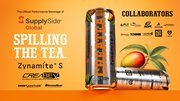Blog
Adding A Dimension To Product Variety In Vending
April 16, 2015 by Tim Sanford
TAGS: Vending Times editorial, vending industry, vending editorial, retail automation, vending operator, vending industry history, coin machine, micro markets, coffee service, food service, Tim Sanford, vending industry expansion, vending multi price options |
For as long as we can remember, product pricing has been a vexed topic in vending. The dramatic expansion of the vending industry began about six decades ago in an economy that was largely free from inflation (in 1955, the rate of inflation was around 0.4%) and the prices for items that could be sold through the vending machines of the day varied little from year to year. As equipment became more versatile and vending grew in popularity, it became necessary to expand the capabilities of the pricing/credit mechanisms on vending machines, and this process continues today.
In the late '60s, it became apparent that the robust, predictable postwar economy was changing in unexpected ways. Commodity prices, for example, began to fluctuate. We remember the horror with which operators confronted the need to increase the price of their vended coffee from 10¢ to 15¢ a cup -- and the creativity with which the industry strove to increase the perceived value by delivering a larger cup and better grades of coffee. Vending was not the only industry challenged by coffee price volatility, and we would argue that vending responded more positively than most other retailers.
At the same time, those multiprice options and the product format flexibility of the new "first-in, first-out" candy/snack machines encouraged vendors to experiment with a wider variety of prepackaged items. For example, an operator on the West Coast got good results in the late '60s by arranging route schedules so that his large accounts were serviced early in the morning on payday. The driver loaded one or two columns of the candy machine with "theater" size boxes of well-known premium items and set the price at 75¢, and changed the column label to one that read "Take something home for the kids."
For the next quarter-century, forward-thinking operators who recognized the value of items that could command a higher price grappled with suppliers who, for reasons of internal performance assessment, insisted on defining "classes of trade" to which particular items would be assigned. This could pose problems for vendors who wanted something that their sales representatives were not supposed to sell them. Toward the end of that era, a new category of "large single serving" bagged snacks appeared and sales strategies grew more flexible, widening operator options.
At the same time, vendors always have recognized that an important part of their clientele consists of people who must keep close watch on their discretionary spending, and it's essential to offer menus that offer not only all the appropriate categories and good variety, but also a range of prices. There is real value to customers who patronize the machines frequently and faithfully, even if they don't buy the highest-priced items.
Operators today enjoy options exceeding the most optimistic predictions of 20th-century futurists. Cashless payment has become not only feasible, but increasingly popular. Sales analysis software supported by line-item data capture in the field makes it easy to identify the most and least popular items in each category by location. Price-setting at the machine has become more straightforward, and streamlining continues.
At the same time, public perceptions of value have become more diverse and complicated, and consumer tastes are changing in unprecedented ways. This poses new problems for operators, but also offers additional opportunities.
For one thing, this industry developed during an era in which the majority of adults had memories of the Great Depression and World War II. Postwar abundance reinforced the idea that more always was better, a belief that often was mocked but seldom attacked.
Until now. Over the past few years, the surprise assault on "supersizing" has been ferocious, driven (visibly, at least) by concern over obesity and fitness and, we suspect, by deep, widespread aversion to a "consumerist" society.
The correct alternative to "more is better" is, we think, "better is better." While we continue to believe, fervently, that the snack and confection items we enjoyed in our childhood were not "unhealthy" in any way; and we still enjoy those that still are on the market. At the same time, we recognize that they occupy a rather narrow niche in the wide spectrum of pleasurable textures and flavors, and we think that today's "mass" market -- which is not nearly as massive as it was in (say) 1965 -- also is ripe for a wider selection that, necessarily, will include higher-priced items. And, with the continuing boom in natural-ingredient/organic/artisinal/esoteric snack items, vendors have an ever-growing variety of novel and interesting new items to sell.
What's more, operators who also run micromarkets can try out sample quantities of something to gauge its appeal, with little administrative effort.
And, while seeking out and testing these unusual items in an effort to make them usual, it will be important to keep an eye on the lowest-priced tier as well. While we want to make vending a destination of first resort, we should remember its perennial value as a last resort, too.







